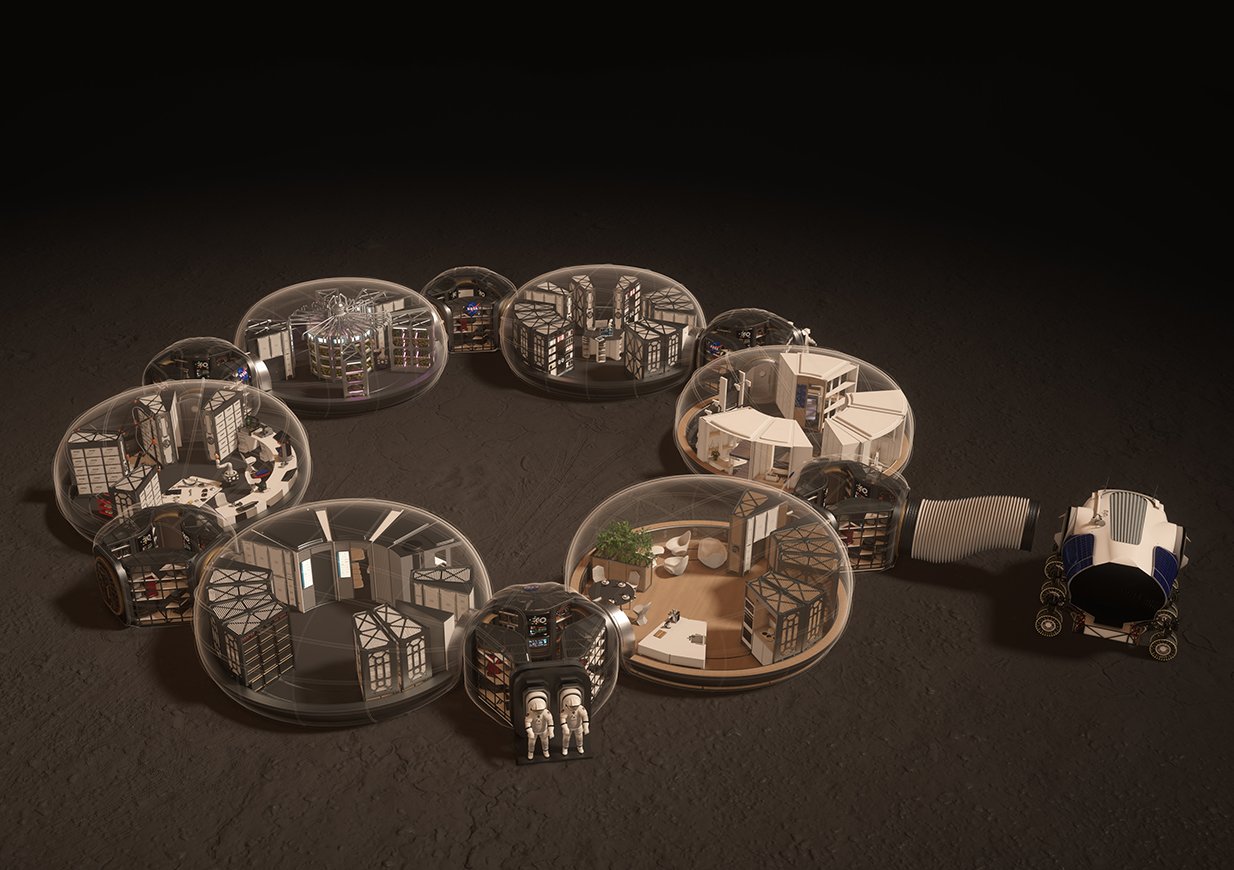Habitat for the first humans to reach Mars, constructed using autonomous 3D printing technologies. A shell formed entirely from the planet’s regolith will protect the astronauts from dust storms, micrometeorites and radiation.
Seeking perspectives from outside the traditional aerospace industry, NASA launched a competition to explore how a human habitat could be designed and delivered on Mars using autonomous 3D printing technologies.
Several substantial hurdles must be overcome for humans to survive in the harsh Martian environment. Perhaps most significant, the lack of a magnetic field and an atmosphere leaves the planet’s surface exposed to much higher levels of radiation than those on Earth.
Eckersley O’Callaghan engineered a shell, which can be constructed entirely by autonomous robots using Mars’ natural regolith, to protect astronauts from radiation, micrometeorite strikes and dust clouds. The EOC Digital Design Team generated the shell’s shape parametrically to achieve a structure that provides maximum protection while minimising the quantity of materials required and the amount of time the robots would need to build it. For this, they used 3D modelling software Rhino and Grasshopper with the physics plugin Kangaroo.
Structural analysis was seamlessly incorporated into the formfinding workflow using the plugin karamba, allowing modification of the geometry on the fly, with resulting stresses and deflections instantly fed back to the designer.
The robots will be sent to Mars a few years before the astronauts are due to arrive. These intelligent machines will have interchangeable roles, including battery storage, scouting, logistics, excavation and 3D printing, all integrated with multiple cameras and sensors for navigation.
Once the astronauts land, they will rapidly construct the building’s interior using a series of inflatable pods that incorporate all the living and working requirements for everyday life on Mars. The design moves beyond the idea of astronauts purely as operators, to create a habitat where people will not only survive on Mars, but really thrive there.






